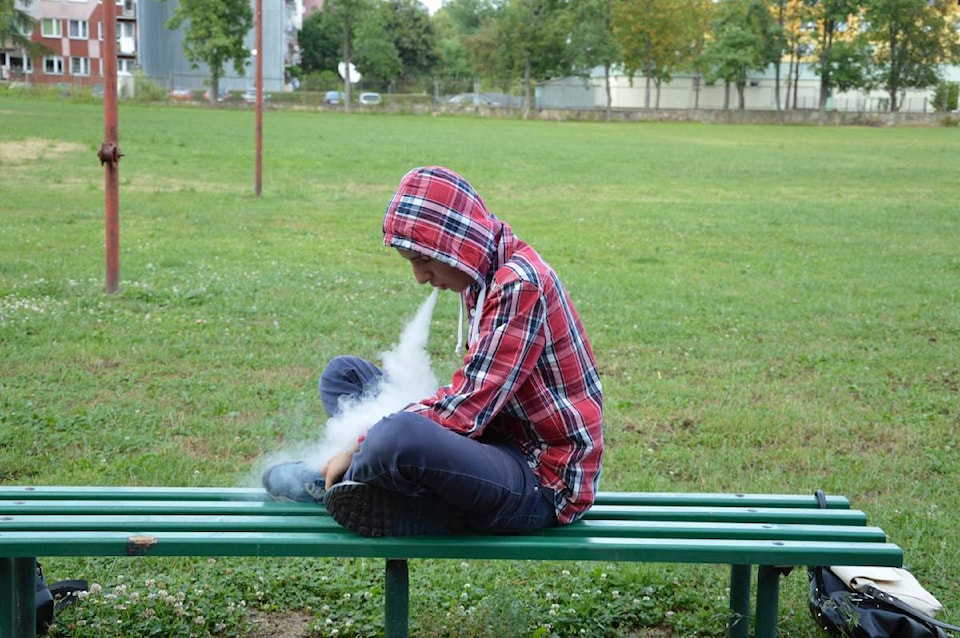Last week, the Kimberley Bulletin reported that School District 6 is concerned about a spike in vaping amongst their students, a concern echoed by Jason Tichauer of School District 5.
Tichauer explained that East Kootenay Addiction Services (EKAS) in conjunction with SD5 have conducted extensive surveys that provided a picture of what vaping looks like in their schools. Their last survey, completed in 2017, indicated that about 35 per cent of high school students had tried vaping, and about 13 per cent of those students reported consistent use.
“So 13 per cent of 35 per cent, you’re looking at about 4 to 5 per cent of kids vape on a regular basis,” Tichauer said. “So if you’re looking at a high school with 900 kids, 5 per cent is significant.”
The official policy across the buildings of SD5 dictates that the use of tobacco products including cigarettes and vapes or E-cigarettes, is not allowed on school property by neither students nor staff.
In 2015, school staff and administrations really began to take stock of the increase in the use of E-cigarettes; this is when they began to conduct surveys to get a better sense of the issue. They also discovered that there was a “marked decrease” at that same time.
“So what was obviously happening, and I don’t think this is any great news, is that people were moving from traditional uses of tobacco by smoking and moving to vaping. In fact that has actually been a significant issue for our buildings.”
Tichauer also said that he’d heard from a high school principal that his school needed to do a lot of work on education, based on the perception from a great deal of people in the community, that vaping is a much safer alternative to traditional smoking.
“It has been an issue just in terms of the educational piece because there does seem to be perceptions out there that this is a safe alternative or, I hate to say it, I think one perception is that it’s a healthier alternative where we know that’s just not the case.”
On an Interior Health information sheet, they say that while there exists a myth that vapour products are harmless, and that the products are often marketed as harmless alternatives to smoking, Health Canada states that there are health risks linked to the chemicals found in vapour products. Furthermore, one of the other concerns is that the long-term effects of vaping are still unknown.
“Early studies indicate a need for caution,” reads another Interior Health Fact sheet. “Nicotine is a highly addictive and toxic substance, and the inhalation of propylene glycol is a known irritant.”
Schools in SD5 have enacted numerous educational strategies including weekly sessions with EKAS and parent information nights.
READ MORE: SD6 administration concerned with rise in vaping among students
“We’re trying to do our best to inform as many parents as we can,” said Tichauer. “A lot of it is about education about the health risk inherent with any type of nicotine us. It is an ongoing battle and it is a new product, and with that newness we don’t have frankly the years of results or research to back what will be happening as a result of this use, so we are very concerned about it.”
As vaping increases, the use of traditional tobacco products has seen a “severe decline,” according to Tichauer.
“I think it’s fair to say we believe that E-cigarettes or vaping have replaced traditional ways of using tobacco for some kids.”
Tichauer pointed out that in 2007, more kids used tobacco than kids are using E-cigarettes now — that year 39 per cent of students admitted to at least having tried a tobacco product.
READ MORE: B.C. school locks bathrooms after too many students caught vaping
“People are still smoking as well,” said Tichauer. “Those numbers are just way down. So if you look at it this way, most of the people who have tried to vape, or experimented with vaping, have not continued to do so.
In fact, only about 35 per cent of people who have ever used an E-cigarette or a vape have done it in the past month. So worrisome yes, but the overall trends are down for nicotine use.”
SD5 will continue working with students and parents, striving to get the awareness of the health risks of associated with vaping, to the same point they are at with conventional tobacco.
“We are concerned about any choices that any of our kids make that we don’t feel would be their healthiest.”
